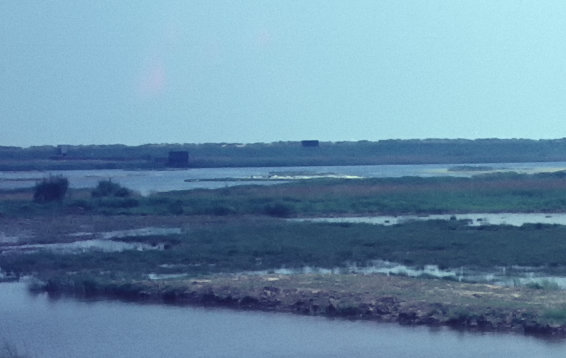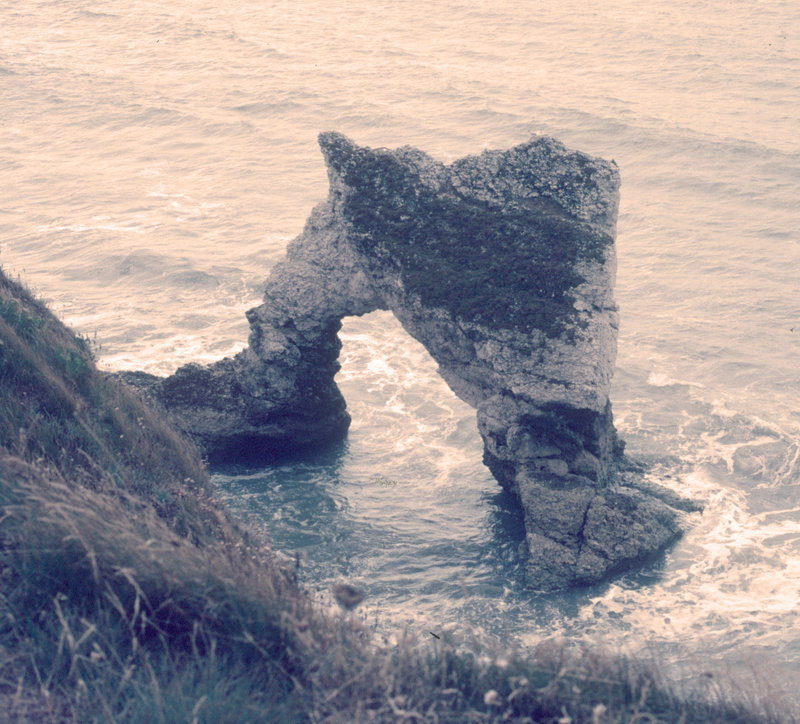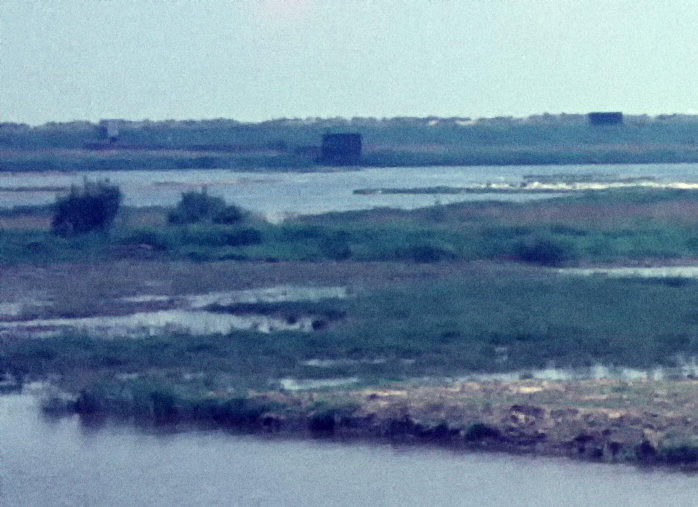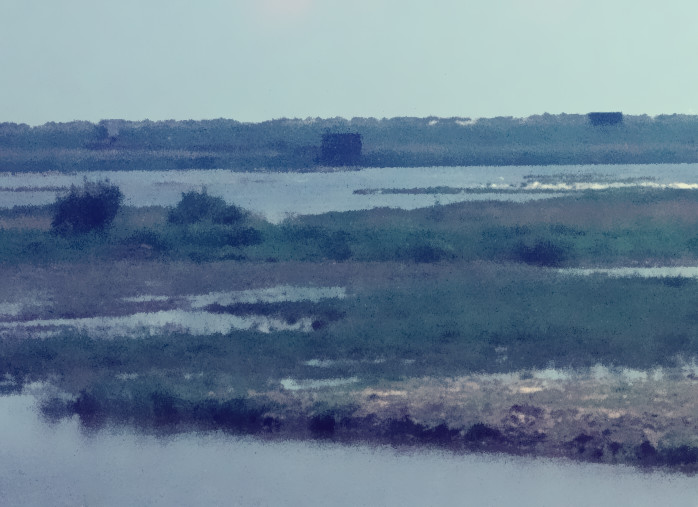I have a large number of slides that have been scanned. The scanning process introduces a certain amount of 'noise', not the same as the usual luminance or chromatic noise, but still a certain small-scale patterning in large areas that should be uniform (such as sky). In many cases the subject matter is such that this does not matter, but in landscapes it can do so. I have tried removing this with Nik Dfine and with Topaz Clarity.
#1 Scanned image at 100%, cropped from original scan with no post processing other than Levels Adjustment.
#2 Same as #1 but with Nik Dfine
#3 Same as #1 but with Topaz Clarity
The Dfine image is some improvement over #1. The Clarity image has removed the patterning in the sky, but at the expense of removing detail from much of the rest of the image.
In both cases, this was my best effort, adjusting the sliders provided.
Does anyone know of any software or plug-in that will help clean up this kind of image? Suggestions welcome.
John
Results 1 to 14 of 14
Thread: Cleaning up scanned slides
-
27th February 2017, 05:22 PM #1
Cleaning up scanned slides
-
27th February 2017, 05:30 PM #2Moderator


- Join Date
- Feb 2009
- Location
- Glenfarg, Scotland
- Posts
- 21,402
- Real Name
- Just add 'MacKenzie'
Re: Cleaning up scanned slides
John - Rather than suggest something else other than what you've tried for cleaning up (which I can't because I don't know what would do a better job), I'm wondering why you're getting that noise in the first place. As far as I'm aware the scanning process should not, of itself, introduce such noise. What software are you using to manage the scanning process and on what are you scanning?
-
27th February 2017, 06:32 PM #3
Re: Cleaning up scanned slides
I am using VueScan software and a Nikon Coolscan V (LS50 equivalent) scanner at 4000dpi. I did wonder if the patterning was due to the ageing process of the gelatin film causing it to wrinkle. These slides are probably 40-odd years old.
JohnLast edited by JohnRostron; 27th February 2017 at 06:54 PM.
-
27th February 2017, 09:51 PM #4

- Join Date
- Jan 2009
- Location
- South Devon, UK
- Posts
- 14,737
Re: Cleaning up scanned slides
Have you tried photographing the slides instead of scanning?
That would prove whether the noise is coming from the actual slide or the scanning process.
What I do if I am doing this instead of scanning is to make a slider holder from a couple of pieces of card and sandwich the slide between the cards; then place a suitable light behind the slide.
I use an upright piece of plywood and attach the home made slide holder with spring clips. My light source is from daylight quality lamps. Obviously use a tripod and make sure you are completely square on with the slide.
Any noise reduction software is bound to soften the image in some way.
Also, do you really need to scan at 4000 ppi which will give a 13 inch image at 300 ppi? Is there any difference in quality from a 2000 ppi scan.
-
27th February 2017, 10:23 PM #5

- Join Date
- Mar 2010
- Location
- Cambridge, UK
- Posts
- 493
- Real Name
- Peter
Re: Cleaning up scanned slides
Did you apply any sharpening in Vuescan?
-
28th February 2017, 10:22 AM #6
Re: Cleaning up scanned slides
Tanks to Geoff and Peter. One thing I tried is to scan the image twice, once up-side-down, then flipping, and then merging the two. No luck though.
VueScan does not offer any sharpening, but it does have a form of multi-pass averaging. I tried this asking it to scan at 4000dpi and output at 2000dpi. I then put this through Dfine and the outcome is:

This is an improvement and I think with a few tweaks, I can get something acceptable. Note that the resolution is half that of the images above.
John
-
28th February 2017, 10:48 PM #7

- Join Date
- Aug 2012
- Location
- Norfolk, UK
- Posts
- 511
- Real Name
- Yes
Re: Cleaning up scanned slides
Some time ago I had a problem using vuescan with a canon film scanner. The Canon software wouldn't work wwith a scci to usb converter but vuescan would.
However it did not cope with some high dynamic range slides and introduced false colour and also produced a very grainy/noisy result. I had excess noise also when used with an Epson scanner.
My solution was to buy a Canon 9000F excellent results at reasonable cost.
Now looking at solutions for batch scanning.
-
2nd March 2017, 02:02 AM #8
Re: Cleaning up scanned slides
Most Ektachrome type slides did not have the quality of a modern DSLR image which is the reason that National Geographic Magazine (known for the quality of its imagery) photographers most often used Kodachrome emulsions. The Kodachrome emulsion was not a silver halide based process, rather it was a dye process and as such did not produce the grain that Ektachrome or other silver based emulsion did.
This was even more apparent when shooting the Kodachrome film with the lowest ISO (ISO 12 and then followed by ISO 25 and then, I believe, ISO 64) compared with Ektachrome or other such silver halide film at a higher ISO (or ASA - depending on the year of the emulsion)...
Additionally, the higher ISO Ektachrome 16mm motion picture film produced terrible results. I was in the production of a film on a Navy surgical team working in a Vietamese Provincial Hospital (in Rach Gia on the Gulf of Thailand). We had a director from Washington D.C. who insisted that we use High Speed Ektachrome film against the wishes of us cinematographers. The results were horrific...Last edited by rpcrowe; 2nd March 2017 at 02:13 AM.
-
3rd March 2017, 03:07 PM #9
Re: Cleaning up scanned slides
I think that my original hypothesis, that is was due to the age of the gelatin on the slide, may be correct. I have tried scanning some slides that are only around 25 years old (as opposed to 40+ years old) and there is no sign of this mottling. They are the same film type (Agfacolor transparecy 50ASA) but of different vintages.
JohnLast edited by JohnRostron; 4th March 2017 at 11:13 AM.
-
4th March 2017, 04:46 AM #10

- Join Date
- Aug 2012
- Location
- Norfolk, UK
- Posts
- 511
- Real Name
- Yes
Re: Cleaning up scanned slides
Ah. Old Agfa transparancies used a very different chemistry to E3 onwards. Developed pre War it used an oil emulsion to suspend the colour couplers within the film emulsion layers as a technology to prevent diffusion of the couplers to different layers. This resulted in a very different "grain" effect. The technology continued in use in Eastern Europe with Orwo the original Agfa factory, though Agfa stopped in 1978 when its slide film moved to E6 process. The same technology was used in USA by Ansco.
Famed for the quality of its reds and skin tones, but unfortunately the magenta dye formed tends to breakdown with the result old Agfa films often develop a cyan cast.
-
4th March 2017, 05:00 AM #11
Re: Cleaning up scanned slides
I had my 35 year old slides scanned by www.scancafe.com and they too have quite a bit of noise on them, which I have not been able to remove. They were taken mostly on ASA 200 Ektachrome, although there are some Kodachrome sldes in there as well. I would love to be able to clean them up if it is possible, but if it is a function of their age then I can let it go!

-
4th March 2017, 11:49 AM #12
Re: Cleaning up scanned slides
This is a 25-year-old slide of the arch at Freshwater Bay in the Isle of Wight, scanned using SilverFast. As loosecannon implies, there was a distinct colour cast (as there was in the 40-year-old slide) but I was able to remove much (but not all of it) in Affinity. There is little evidence of any mottling in the image.

John
-
11th March 2017, 01:32 PM #13
Re: Cleaning up scanned slides
I have scanned hundreds of slides and negatives with excellent results. What little grain that shows up is removed by Noiseware. Most times I don't need to use it as the scans are clean to start with. This is one that was taken in 1974.

This is a negative scan that was originally made about 1940.

I think these results are quite good. I use the Canon 8800F scanner and do any processing in PS. I don't think age has anything to do with your not so great results as mine are very old as well. I would look to your hardware or processing software. The other thing to consider, of course, is that your original pictures are just not of very good quality. Obviously, if they were poorly taken in the first place your scanned results won't be any better.
-
12th March 2017, 12:11 PM #14
Re: Cleaning up scanned slides
A useful observation Bob. Most of my older scanned slides were taken with a Canon Scanner which eventually gave up the ghost. The recent scans I posted were taken with a Nikon Coolscan V (LS50) which is now getting long in the tooth. I have been using Silverfast to control the scanner and have just started using Neat Image which is doing a fairly good job in removing the noise. Could be that the slide that I originally chose was a poor one!
I do take your point about the original quality of the pictures. These were taken with a Yashica SLR (a sort of poor-man's Pentax) and a cheapo telephoto (as befitted a student at the time). I was using these until I went digital. I hope that, fifty year later, my technique has improved.
PS, you first image looks rather sixties rather than seventies!
John

 Helpful Posts:
Helpful Posts: 



 Reply With Quote
Reply With Quote

